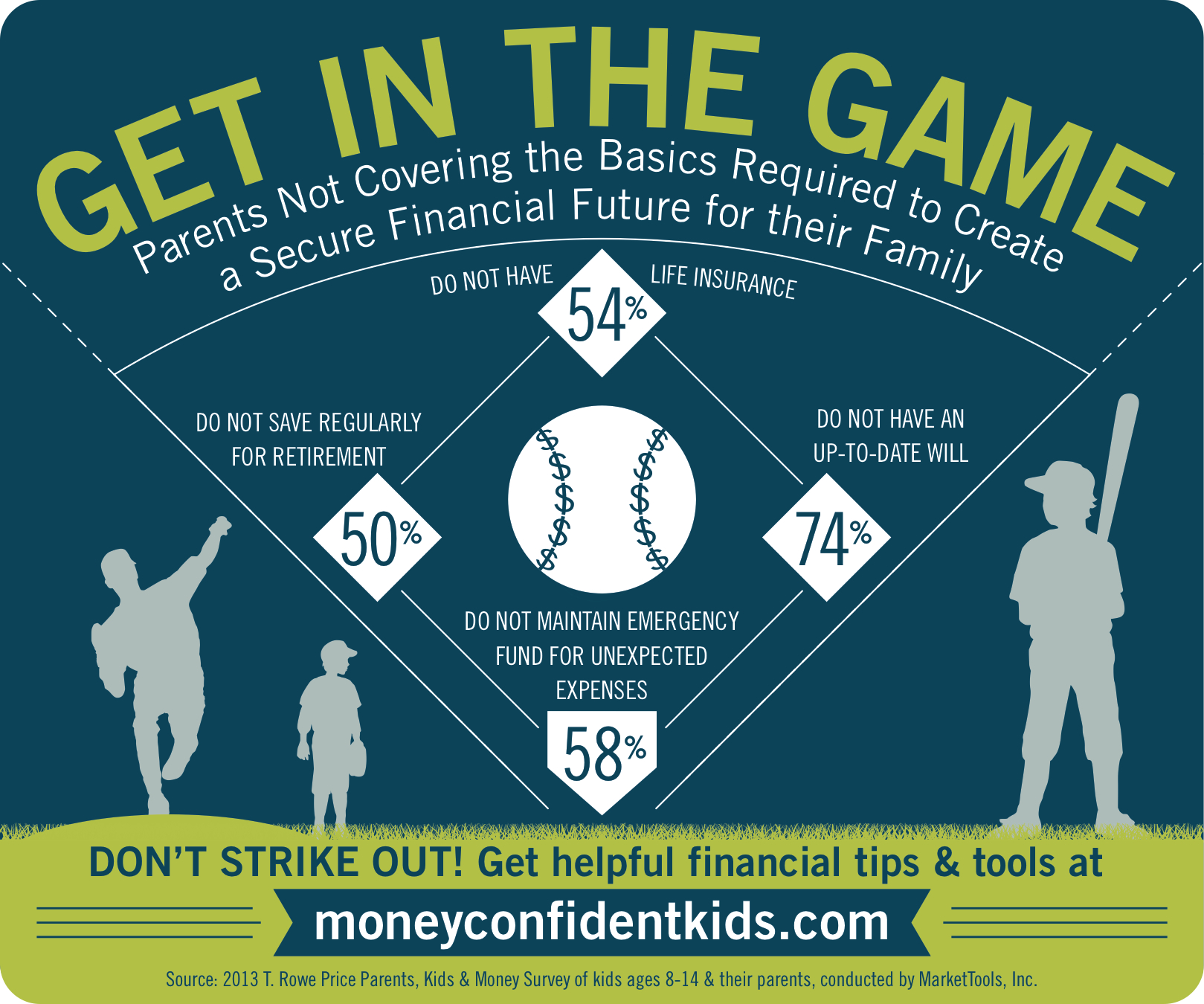The following is a guest post on behalf of T. Rowe Price, a global investment management firm dedicated to helping clients achieve long term success.
Do you think your kids will be better off than you financially once they reach your age? Yes? So do more than half of parents and kids ages 8-14, according to a new survey released by T. Rowe Price. The 2013 Parents, Kids and Money Survey revealed that although nearly three quarters of parents say they have regular conversations with their kids about money, the lessons parents are sharing often focus on short-term needs versus the habits needed for a secure financial future. With half of parents not actively saving for retirement or maintaining an emergency fund, it’s time for parents to step up to the plate when preparing for the future and helping their kids understand the importance of long-term financial planning.
Parents can give their kids the push they need to get off the bench and become financial pros. We know kids are ready to start learning about financial goals and how to manage their money. Parents can start by:
1. First, set goals – The 2013 Parents Kids & Money Survey found that more parents are saving for vacation than for college. Talking about saving for a summer vacation is a good place to start. At the same time, parents also need to explain the importance of setting long-term goals like saving for education, a car, or even retirement. To help young children with this concept, put it in terms they understand. Have two piggy banks for your children, one for something like a treat at the candy store (a short-term goal), and one for something like a new bike (a long-term goal).
2. Lead by example – Parents need to act as good role models to improve their kids’ chances of learning smart financial lessons. While parents and kids agree a good education and hard work are key to financial success, more parents think financial knowledge plays an important role than kids do. Lead by example and take advantage of small teachable moments to help children establish a solid financial education – without realizing they are learning! Instead of ordering delivery pizza for dinner, make or buy a frozen one and discuss how spending your money wisely pays off and how you can also get ice cream for dessert because you saved so much on dinner.
3. Use everyday situations to start the conversation – Discussions about money do not always have to be planned. In fact, the best lessons come from real life situations. Whether it’s using coupons at the grocery store, balancing a checkbook, or comparison-shopping for a new television, there is always the opportunity to teach a valuable money lesson. Incorporate financial ideas into the conversation and use simple terms your child will understand.
To celebrate Financial Literacy Month this April and to help parents and kids get into the game, T. Rowe Price launched MoneyConfidentKids.com, an online hub providing free games for kids, lessons for educators and tips for parents focused on goal setting, spending versus saving, inflation, asset allocation, and diversification. Three-quarters of kids surveyed say that an online game would be helpful to learn the basics of saving and spending. At Money Confident Kids kids can play games to learn and practice basic financial skills. By making financial concepts part of your every day activities with your family, you can set your kids up to be true financial all-stars.
About the Author: Stuart Ritter, CFP®, is a T. Rowe Price financial planner and expert in family financial education. He is a father of three young kids.






Lauren
Wednesday 18th of September 2013
This post contains really great advice! A lot more parents need to teach their children about responsible money management at a young age so they can make it a lifelong practice!